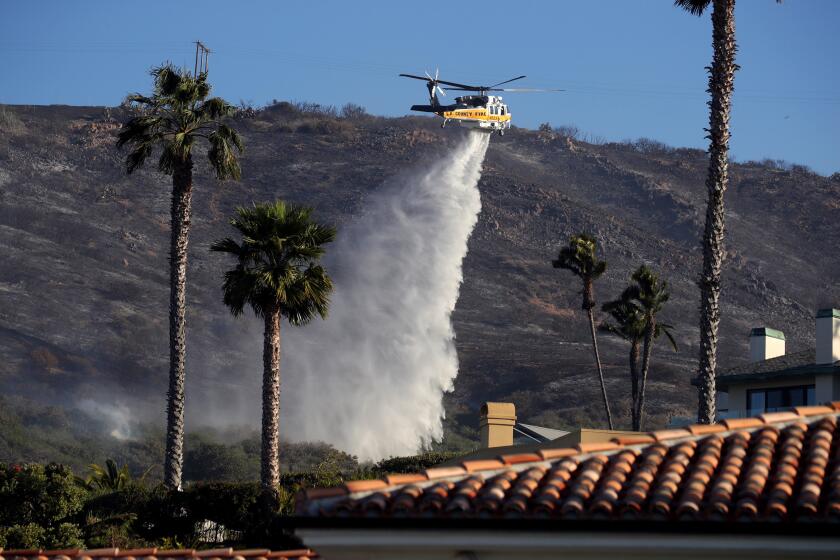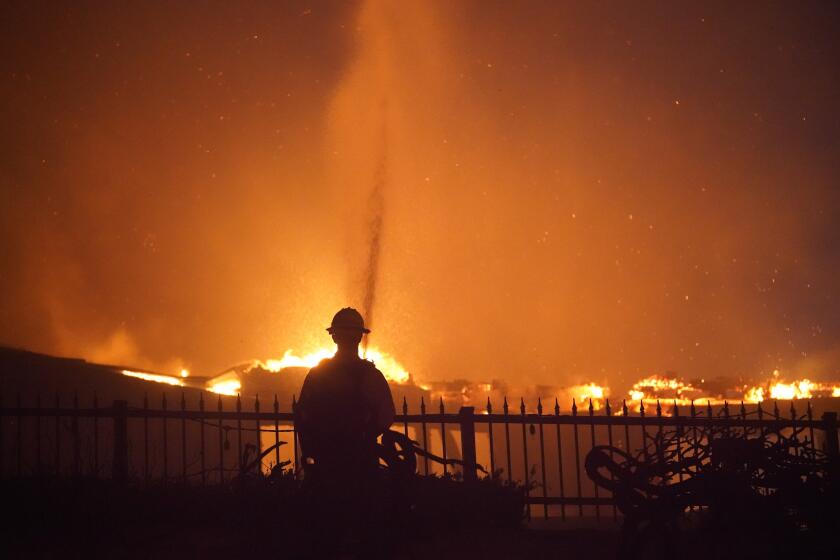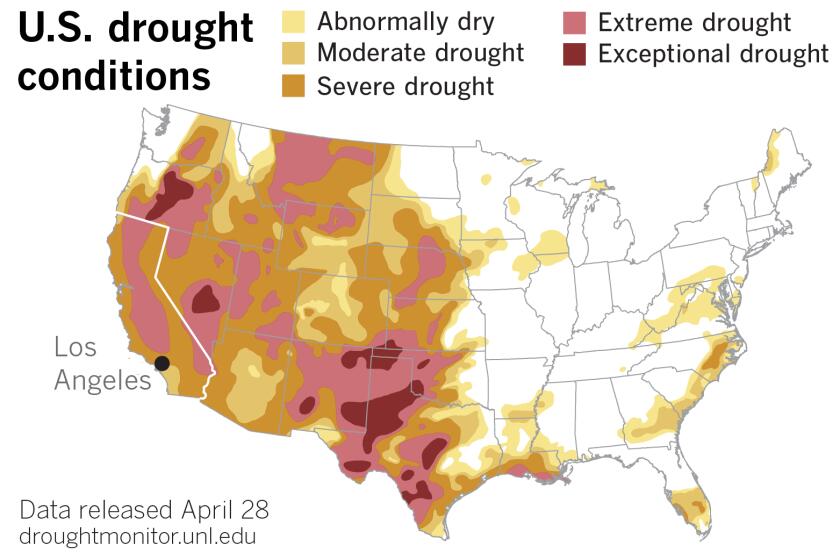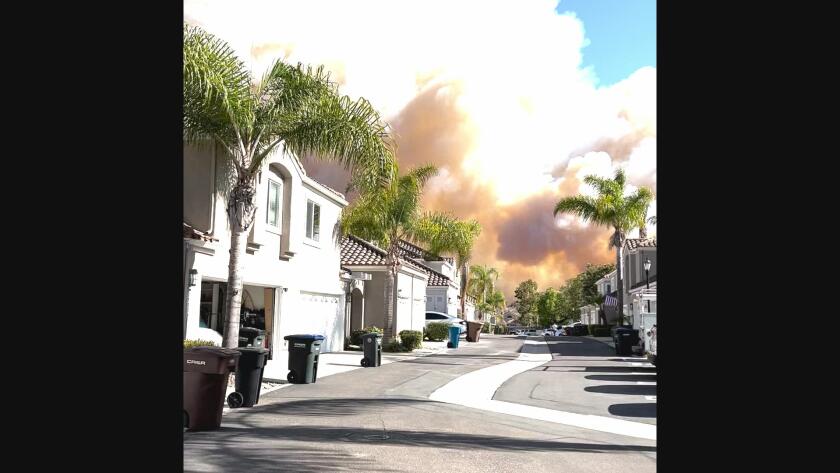Fire destroys at least 20 homes in Laguna Niguel amid drought conditions
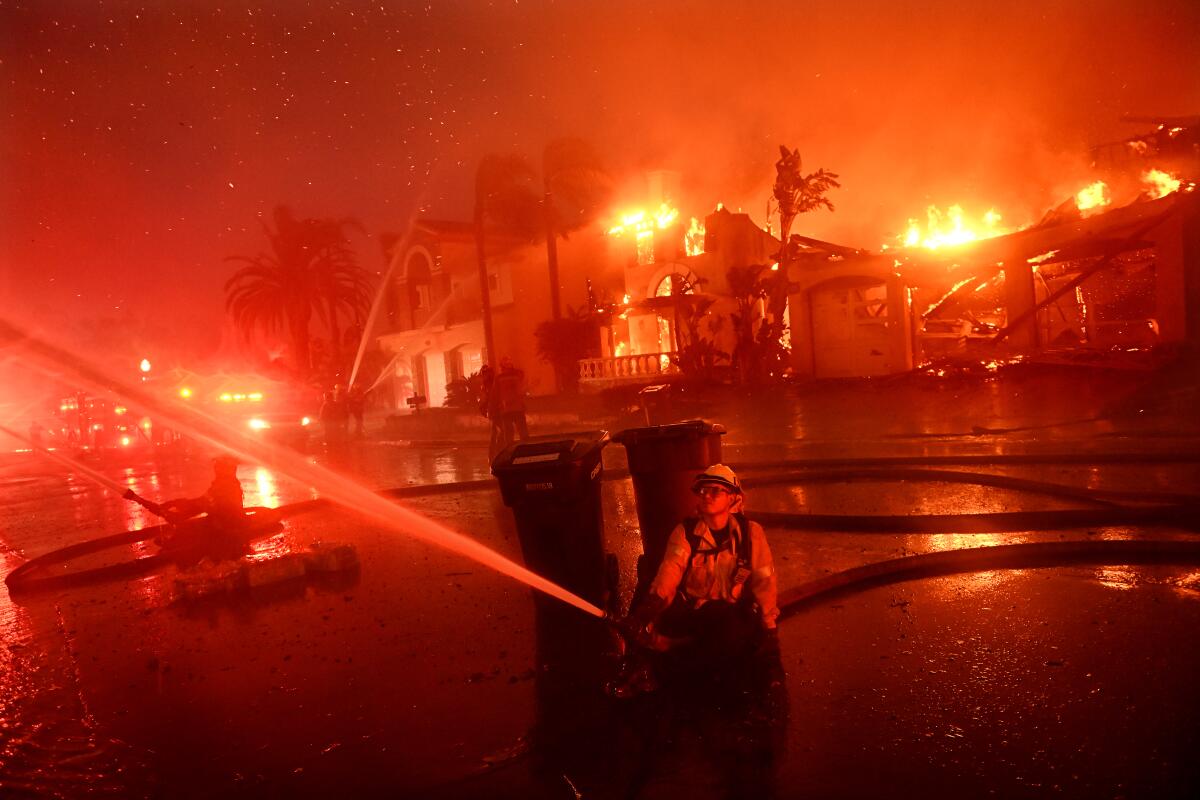
A fire fueled by intense ocean winds barreled into a gated community overlooking the Pacific Ocean in Laguna Niguel on Wednesday, burning at least 20 homes in the latest sign of the drastic effects that climate change and drought are having on California fire danger.
The Coastal fire broke out on a cool but gusty day and spread rapidly, cresting up a canyon before burning huge ridgetop homes. Hundreds of residents fled the flames while firefighters spent the night in pitched house-to-house battles trying to prevent the blaze from spreading deeper into the subdivision.
The fire was 0% contained, and a local emergency order remained in place in Laguna Niguel as of late Wednesday night, said Orange County Supervisor Katrina Foley.
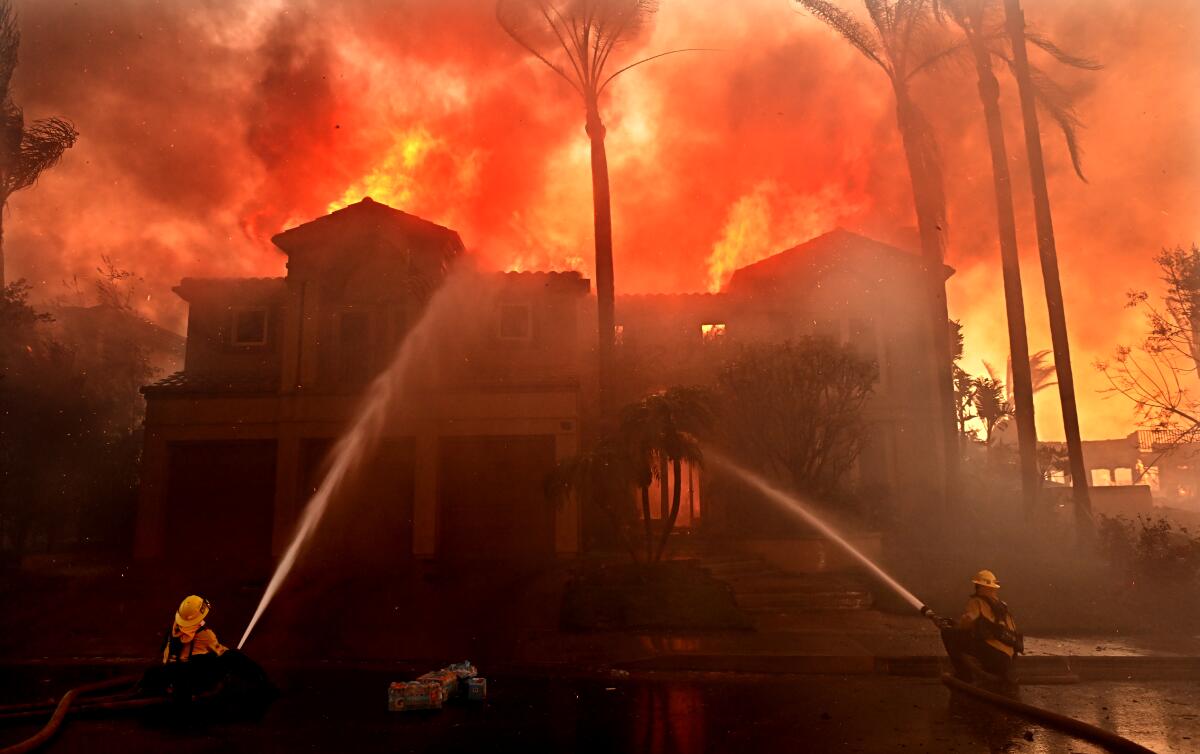
Orange County Fire Authority Chief Brian Fennessy said at a Wednesday night news conference that an estimated 20-plus homes had been destroyed. Winds had died down a bit, Fennessy said, but not before pushing the blaze to 200 acres.
The destruction underscored the year-round danger of fires in Southern California, even in cool conditions. Unlike many wildfires in the region, the Coastal fire was fanned not by Santa Ana winds from the desert but by strong gusts coming from the Pacific Ocean.
Wind gusts reached 30 mph in parts of Orange County on Wednesday, said National Weather Service meteorologist Brandt Maxwell, driving the flames across drought-parched hillsides.
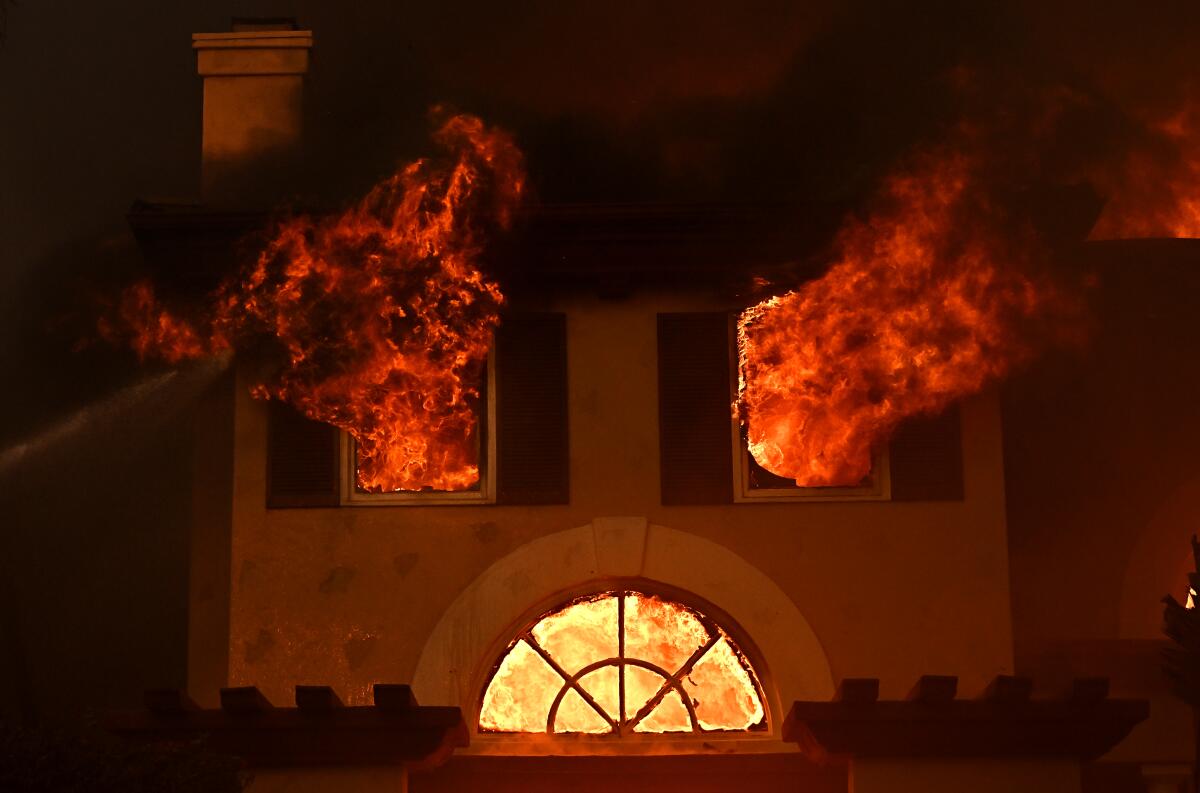
“I guess it’s just disheartening that we’re already seeing a fire that’s this aggressive and it’s only May,” Maxwell said. “Usually this is something that we see later on in the summer and especially in fall.”
“It’s sad to say that we’re getting kind of used to this,” the Orange County Fire Authority’s Fennessy said. “The winds we experienced today are normal winds…. We’re seeing spread in ways we haven’t before. Fire is spreading very quickly into this very dry vegetation and taking off.”
Persistent drought conditions in California and across the western United States have left vegetation so dry that it doesn’t take much for the fuels to ignite, Fennessy said.
Two fires, one near Laguna Beach and the other near Whittier, brought harbingers of a difficult fire year for the parched region.
Authorities received the first 911 calls reporting a roughly 50-by-50-foot fire near a water treatment plant, Fennessy said.
Crews launched an immediate attack, but the fire quickly made its way upslope into the canyon, he said. Steep terrain made it difficult at first to get water hoses and hand crews into the area.
Efforts to contain the blaze were further complicated because the area is covered by thick vegetation that Fennessy said probably hasn’t burned in decades.

By the time he set out for the scene, the chief said, he saw a “tremendous smoke column” and knew what started out as a small brush fire was quickly turning into a significant event.
“The threat to life and property and firefighter life is extreme,” Fennessy said.
Sara Nuss-Galles watched the fire grow from her ridgetop home on Via Estoril in Laguna Niguel for more than an hour Wednesday afternoon before deciding it was time to leave. Smoke choked the hillsides as ash fell across the city.
“My clothes smell from the hour I spent in the house,” she said. “It’s just plumes of smoke. It’s very scary.”
The wind-driven brush fire began about 3 p.m. Wednesday in a canyon near Laguna Beach and raced uphill, reaching a subdivision at the top of the crest.
Nuss-Galles and her husband, Arie Galles, grabbed a few personal items and their two cats, Pitzel and Ketzel, and drove to a friend’s home a few miles away.
Along the way, they saw people parked along the sides of the roads, standing on the beds of their pickup trucks and in their trunks watching the fire.
Around 5:30 p.m., sheriff’s deputies went door to door in her neighborhood to tell people to evacuate.
“It’s just awful,” she said.
By around 7 p.m., hundreds of homes in Laguna Niguel had been evacuated.
Firefighting vehicles raced south on Pacific Coast Highway, entering through the Ranch, a local country club and golf course. Crews and resources from Orange County, Laguna Beach, Los Angeles County, the California Department of Forestry and Fire Protection, Newport Beach, Costa Mesa and Anaheim were fighting the blaze.
The South Coast Air Quality Management District issued a smoke advisory for parts of Orange County that will remain in effect through Thursday afternoon.
“It’s so heartbreaking,” Orange County Supervisor Lisa Bartlett, whose district includes Laguna Niguel, said of the fire. “It started as three to five acres, and then it went to 40 acres in like a millisecond and went out of control from there.”
The wind has been one factor in the spread, but the size of the homes has also made containing the blaze difficult, Bartlett said.
La Niña was expected to dissipate, but it may linger through the summer. That’s bad news for drought and wildfire-prone California.
“When you take a look at the size of the homes, there’s just so much combustible material that they burn fast, and then the wind starts and the flames can just leap from house to house,” she said.
Julianna Shapiro, 52, couldn’t take her eyes off the billowing smoke and flames less than three miles from her home.
“It takes your breath away,” Shapiro said as she stood outside watching her community burn.
At one point in the afternoon, ocean winds blew the smoke directly toward her home, making it difficult for her to see what was happening.

Driven by winds from the ocean, the Coastal fire roared into an Orange County subdivision, destroying at least 20 homes, authorities said.
Her eyes watered, her chest hurt, and she thought of what she might pack in case of an evacuation in her neighborhood. Inside, she watched news reports showing multimillion-dollar homes erupt in flames.
Shapiro recognized one of them — a house listed on Zillow for $10 million.
“It’s just so hard to watch, but I can’t not watch it,” she said. “It’s basically our neighbors losing their homes. You feel so hopeless.”
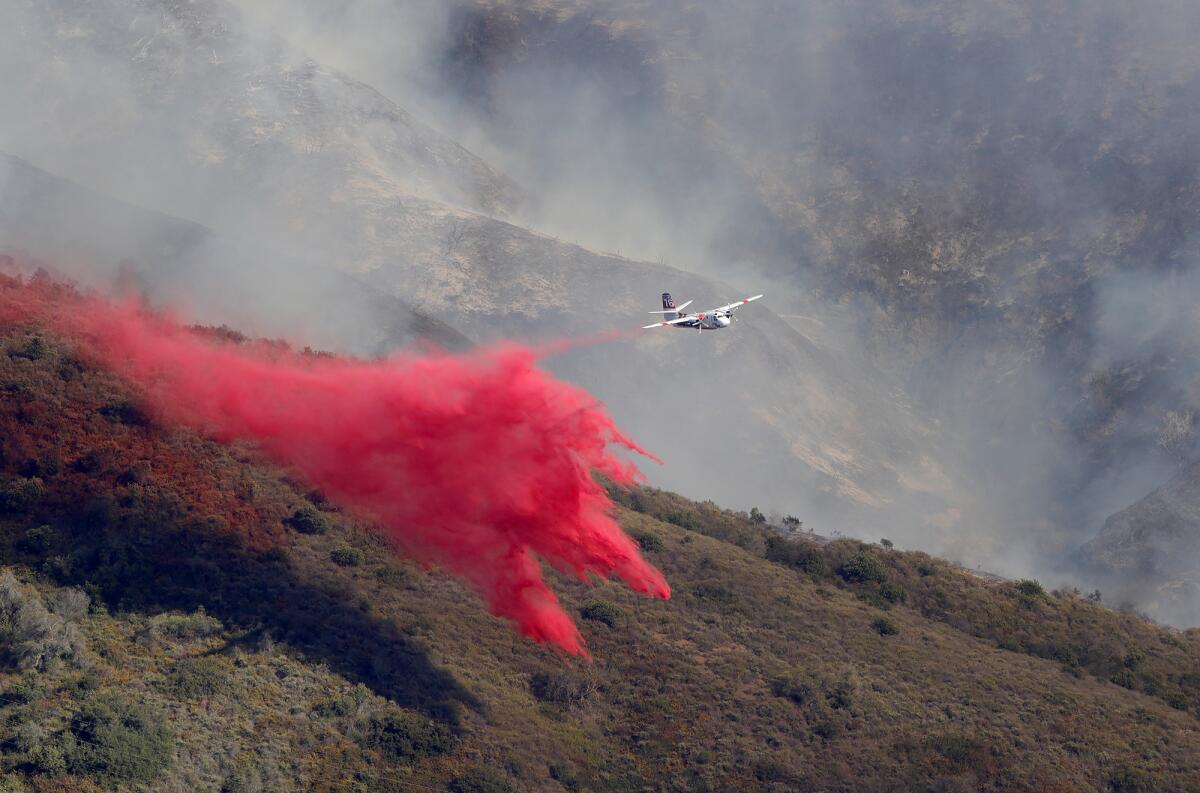
Fennessy, who arrived in Coronado Pointe as deputies were going door to door, praised residents for their cooperation.
“It was probably one of the most orderly evacuations I’ve ever witnessed,” the fire chief said.
At an evacuation site set up at the Crown Valley Community Center, people gathered to watch the fire on a television.
Tim White, 54, fled his Laguna Niguel house with his wife. He said he lives in the Monarch Summit neighborhood, south of the fire, and decided to evacuate Wednesday before the order came.
“My wife and I were home working and we heard the plane flying overhead and we thought, ‘That’s a low plane,’” White said, standing outside the community center with his 17-year-old daughter.
It was a plane dropping fire retardant.
“We walked down the block and we saw the smoke and flames, and we bugged out,” White said. “I’m trying to remain calm. The helicopter reports look like they’re in our favor.”
Snacks and water bottles were on hand at the center, and a separate room was opened for evacuees with pets.
Among them was Cindy Kramer, 55, who evacuated with her mother from her home in the Niguel Summit neighborhood near the fire, but the home so far was unaffected.
“Our place wasn’t mandatory evacuation, but everyone was leaving,” she said.
A 15-year resident of the neighborhood, Kramer packed clothes, passports and phones and set off, unsure of when it would be safe to return home or where she would spend the night.
“We have friends in the area,” she said. “Lucky I got gas this morning too.”
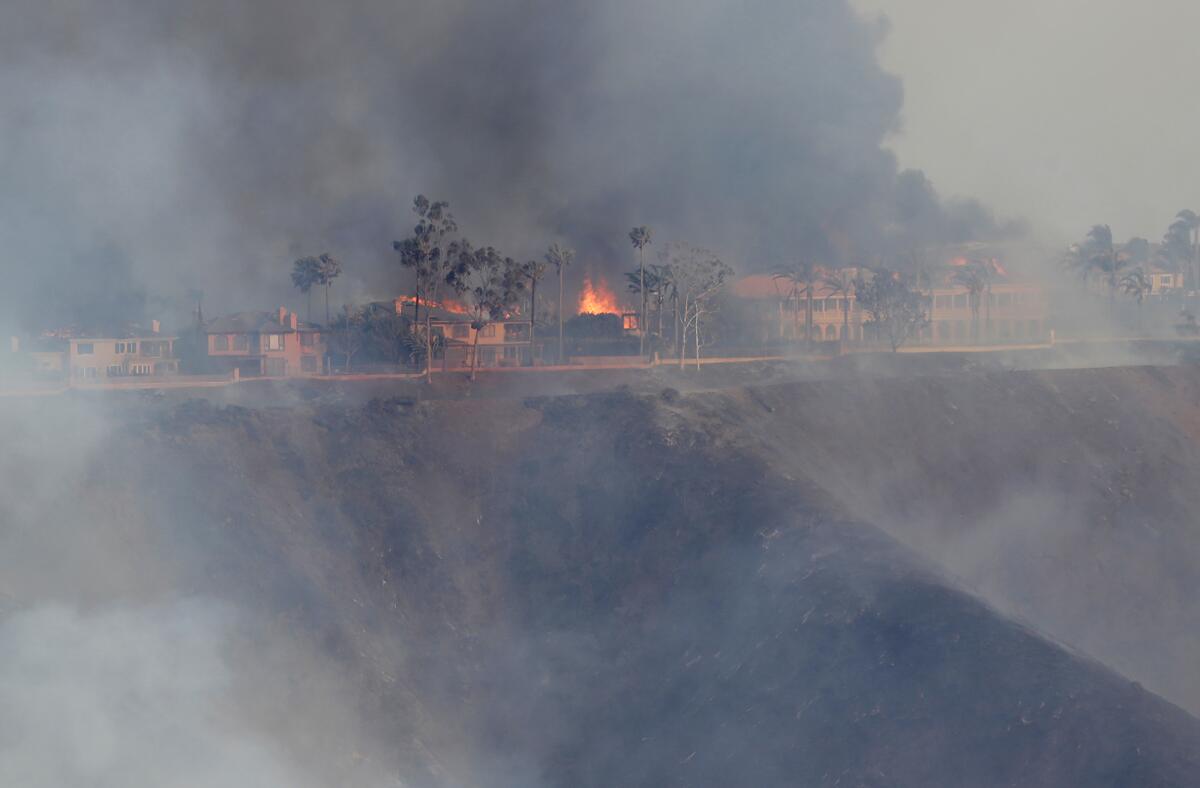
When Ginger Stickney got a call about the growing blaze around 4:30 p.m. she rushed home from her job in Orange, calling a family member while on the road who fetched her elderly cat, Indy, and her laptop.
“You’re trying to be calculating — figuring out what’s most urgent to do — while being calm at the same time,” said the audiologist, who has lived in Laguna Niguel since 2013. “When I left for work this morning, there was no fire. Who knows what will go down in the next hours.”
Stickney’s neighbors up the hill along Pacific Island Drive had evacuated, and she didn’t wait for the exit orders.
After a quick stop to fill up her car with necessities, she took refuge with her son and other family, and began monitoring the news.
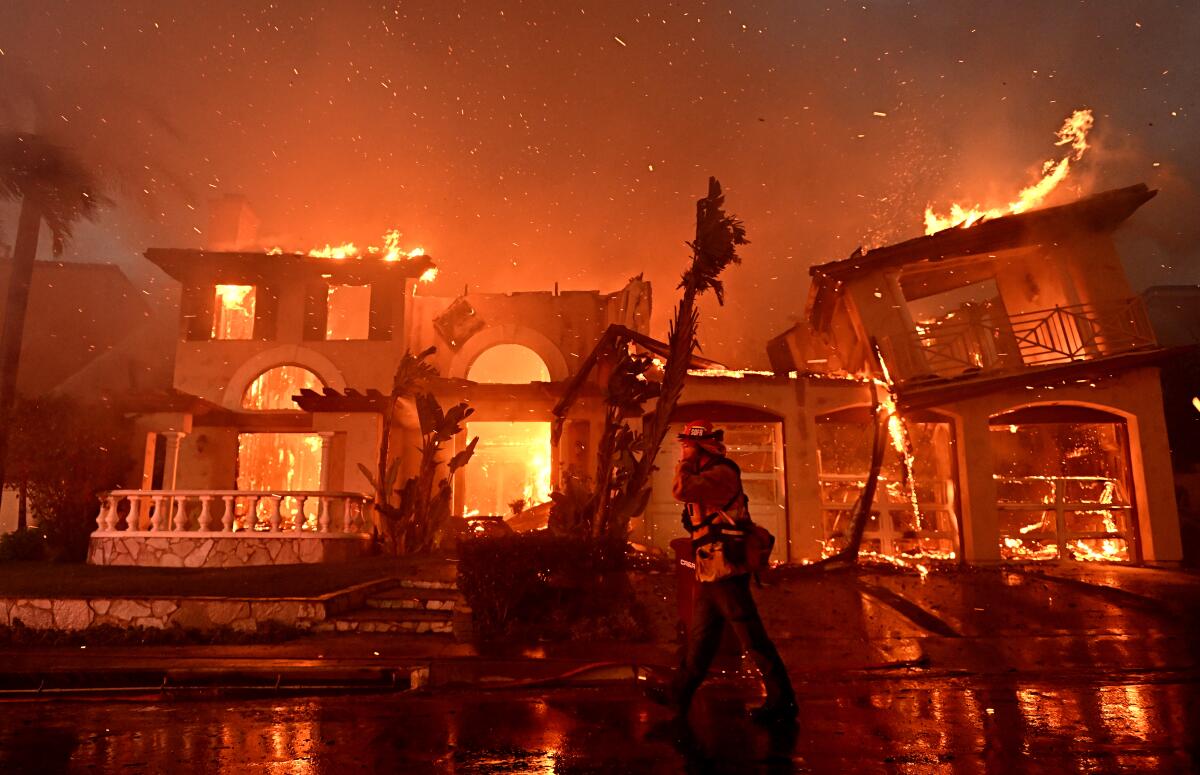
“We’re going to have a glass of wine, eat some pizza and try to decompress. My sister was just calling me to talk about summer travel. I told her what’s happening and she right away sent me a Red Cross list of what to do,” she recalled, half laughing, “half stressing,” as she described it.
For Shapiro, nightfall brought calmer winds and renewed clarity.
She felt much safer, now able to see firetrucks and shining lights on the ridge. Watching the orange glow from her bedroom window, she thought about how climate change has supercharged blazes like the Coastal fire.
Shapiro used to think about the seasons as “fire, flood, earthquake and drought.”
“Now it’s fire, fire and fire,” she said. “I do think we should be afraid of [climate change].”
She thought of the future and how Californians can’t give up.
“It’s hard to deny that things have been changing rapidly,” Shapiro said. “If we don’t do something to turn it back, it can just get so much worse. And it’s frightening.”
Times staff writer Tony Briscoe and Times Community News staff writer Andrew Turner contributed to this report.
All the latest on Orange County from Orange County.
Get our free TimesOC newsletter.
You may occasionally receive promotional content from the Daily Pilot.
